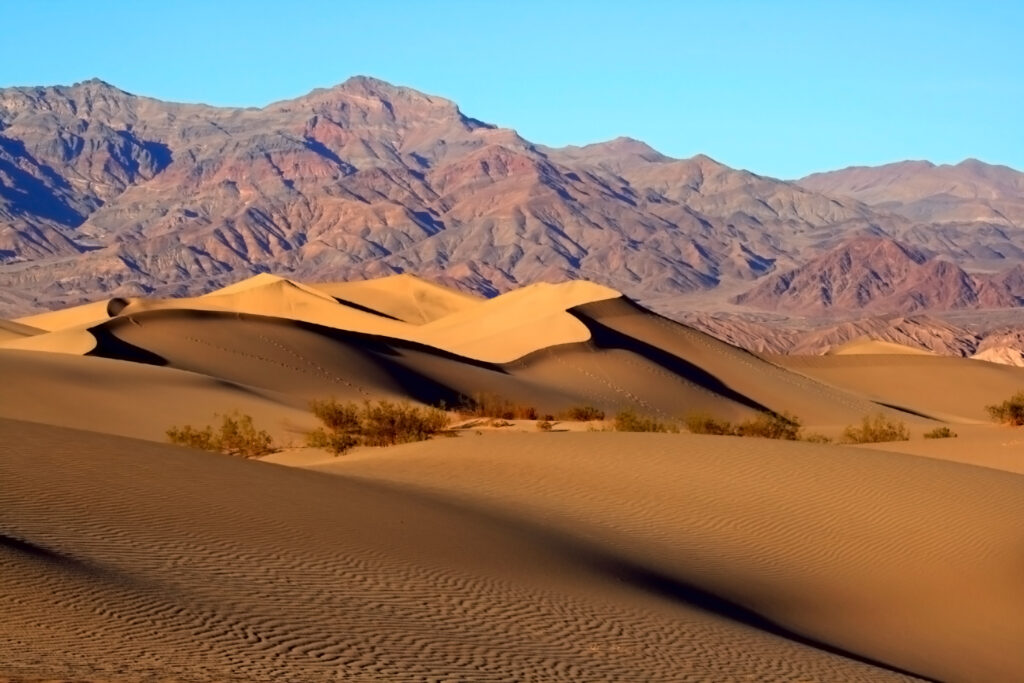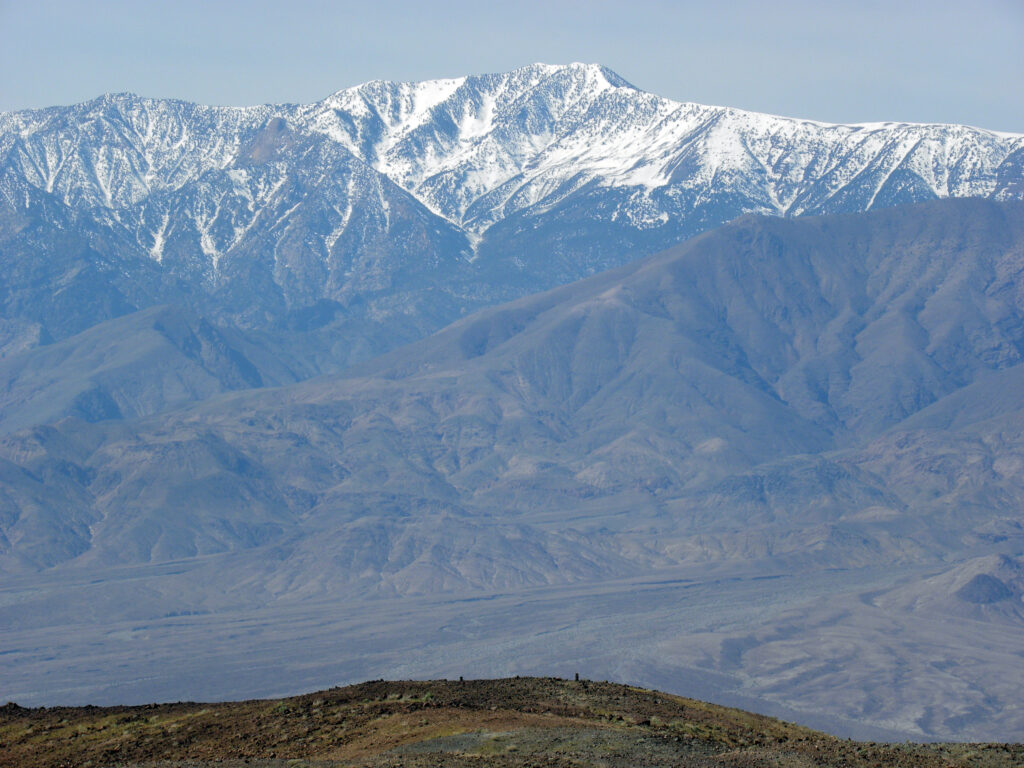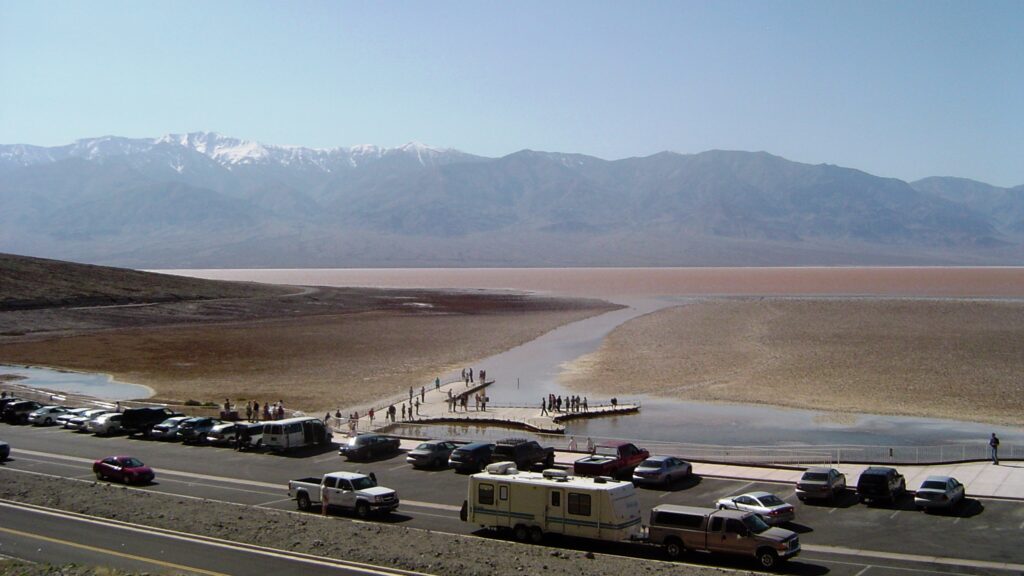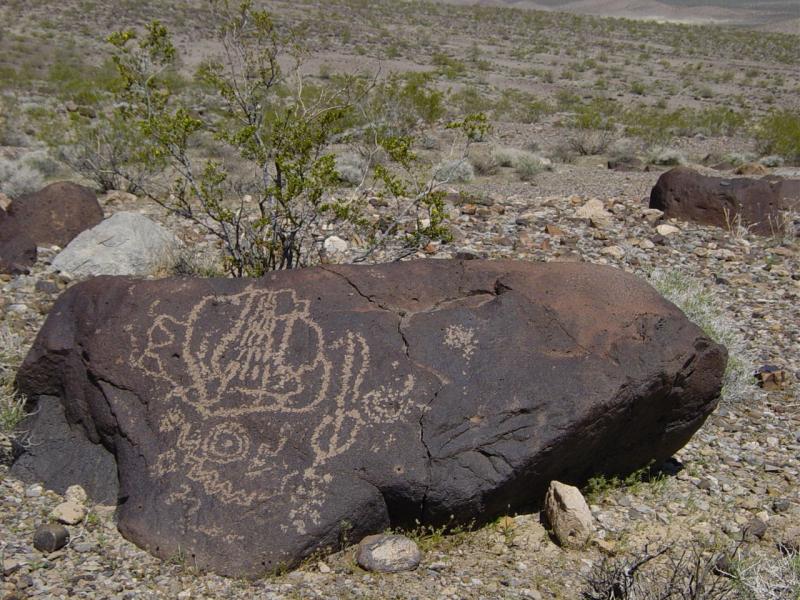Death Valley. The name itself evokes images of a desolate, sun-scorched wasteland, a place of ultimate extremes to be endured rather than enjoyed. But to define this national park by its intimidating name is to miss the point entirely. Death Valley National Park is a land of profound, surreal beauty. It’s a geological masterpiece where the Earth’s raw power is on full display, a place of stark contrasts where shifting sand dunes, salt-crusted flats, and rainbow-colored canyons exist under the darkest night skies imaginable.
This is not a land devoid of life, but one that harbors incredible resilience. Visiting Death Valley is an adventure that challenges your perceptions and rewards you with vistas that feel otherworldly. It’s a journey into a world of superlatives, where you can stand at the lowest point in North America and gaze up at towering, snow-dusted peaks.

A Land of Superlatives: The Lowest, Hottest, and Driest
You can’t talk about Death Valley without acknowledging its record-breaking statistics. It is, quite simply, a place unlike any other on the continent. The park holds the title for the hottest air temperature ever recorded on Earth, a blistering 56.7∘C (134∘F) at Furnace Creek in 1913. It is also the driest place in North America, receiving less than two inches of rainfall annually on average.
The most famous of its extremes is Badwater Basin. At 282 feet (86 meters) below sea level, this vast expanse of salt flats is the lowest point in North America. Walking out onto the polygonal, salt-crusted ground is a surreal experience. The immense scale of the valley unfolds around you, with the distant Black Mountains shimmering in the heat haze. It’s a humbling reminder of the powerful geological forces that sculpted this incredible landscape.

The Must-See Vistas: Iconic Death Valley Viewpoints
While the statistics are impressive, it’s the visual splendor that truly defines the Death Valley experience. Several key viewpoints offer breathtaking panoramas that will be seared into your memory long after you leave.
- Zabriskie Point: This is perhaps the most iconic vista in the park. From the lookout, a stunning panorama of golden-hued, deeply eroded badlands unfolds before you. It’s a landscape that looks like it belongs on another planet. Visiting at sunrise or sunset is a spiritual experience, as the low-angle light ignites the rippling hills in fiery shades of orange, pink, and gold.
- Dante’s View: For a bird’s-eye perspective, nothing beats the view from this 5,475-foot overlook. From here, you can gaze directly down at Badwater Basin, over a mile below, and across the entire valley to the Panamint Range on the far side. The sheer scale and geography of the region become clear from this stunning vantage point.
- Mesquite Flat Sand Dunes: Near Stovepipe Wells, you’ll find the classic desert landscape of your imagination. These sweeping, graceful sand dunes rise up to 100 feet. The best time to visit is in the early morning or late afternoon when the low sun casts dramatic shadows, highlighting every ripple and crest in the sand. Kicking off your shoes and walking across the dunes is a simple, profound pleasure.

More Than Salt and Rock: Hidden Canyons and Colors
Beyond the grand vistas, Death Valley is filled with intimate, hidden gems waiting to be explored. A drive or a hike through these areas reveals the park’s surprising diversity and its vibrant palette of colors.
One of the most spectacular detours is Artist’s Drive, a nine-mile, one-way scenic loop. The highlight is Artist’s Palette, where volcanic minerals have stained the hillsides in incredible shades of pink, green, yellow, and purple, looking as though a giant painter has swiped a brush across the landscape.
For hikers, Golden Canyon offers an incredible walk through narrow, winding passages flanked by towering golden walls. The trail can be extended to connect with Gower Gulch and Zabriskie Point for a longer, more challenging adventure that immerses you completely in the badlands.

A Canvas of Stars: Stargazing in a Dark Sky Park
When the sun finally sets on Death Valley, an entirely new world reveals itself. As a designated Gold Tier International Dark Sky Park, it is one of the best places on the planet for stargazing. The combination of dry air, clear skies, and extreme distance from city light pollution creates a breathtakingly clear window into the cosmos. On a moonless night, the Milky Way arcs across the sky not as a faint haze, but as a brilliant, textured river of light. The sheer number of visible stars is astounding, offering a sense of wonder and perspective that is hard to find anywhere else.

When to Go and How to Survive: Planning Your Adventure
Death Valley is a place that demands respect. Its extreme environment means that planning is absolutely critical for a safe and enjoyable trip.
The Best Time to Visit: The prime season is from late fall to spring (November through April). During these months, daytime temperatures are pleasant, ranging from cool to warm, making it ideal for hiking and exploring. A wet winter can even lead to a rare and spectacular spring wildflower bloom.
A Word on Summer: Visiting in the summer (June through September) is possible, but extreme caution is necessary. Temperatures regularly exceed 49∘C (120∘F). Hiking is strongly discouraged after 10 a.m. All sightseeing should be done from the comfort of an air-conditioned vehicle.
Essential Safety Tips:
- Drink Water: Carry at least one gallon (4 liters) of water per person, per day. Drink it even if you don’t feel thirsty.
- Travel Prepared: Ensure your vehicle is in good condition, with a full tank of gas before entering the park. Services are few and far between.
- No Cell Service: Do not rely on your phone. Most of the park has no cellular reception. Download maps ahead of time.
- Know Your Limits: Avoid strenuous activity during the heat of the day.

Lodging and Camping
Despite its remote location, Death Valley offers a range of accommodation options. The Oasis at Death Valley provides resort-style lodging at the Inn and Ranch at Furnace Creek. For a more rustic option, the Stovepipe Wells Village hotel offers classic motel-style rooms. Numerous campgrounds are scattered throughout the park, from full-service sites at Furnace Creek to more primitive, remote locations for those seeking solitude under the stars.
Death Valley is far more than its name suggests. It is a place of immense power and delicate beauty, a land that teaches us about resilience, time, and our own small place in the universe. It asks for your respect, and in return, it offers an adventure that is truly unforgettable.
